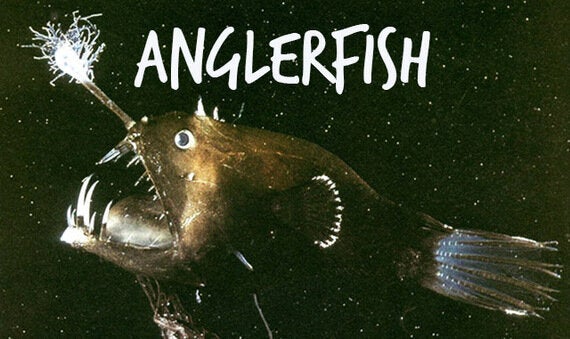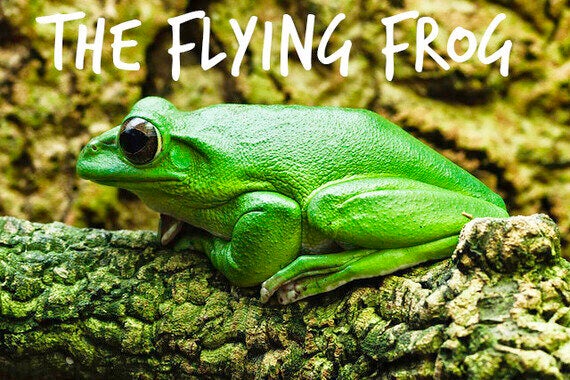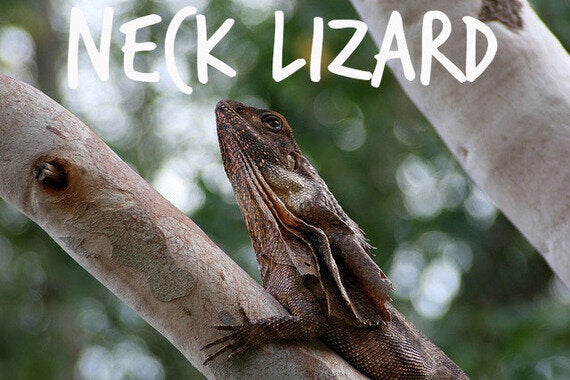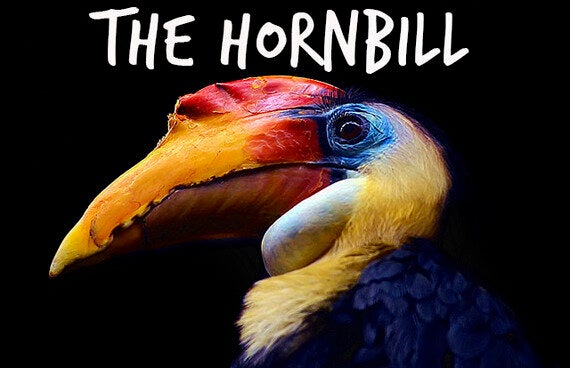The world is full of animals of different sizes, colours and behaviours living in all types of habitat from the polar regions to the depths of the oceans to the humid and exotic rainforests. There are plenty of adorable animals with majestic appearances such as pandas or tigers, however there are also many bizarre looking animals that may not appeal to us humans. Charles Darwin has taught us that animals undergo constant evolutionary selection so that the seemingly disfigured animals are actually naturally adapted to thrive in their habitats. Here we have selected a weird animal from some animal orders and will show how their bizarre features serve an important purpose.
1. Fish

Image courtesy of Helda Da Rocha
Some of the most bizarre fish are the deep-sea dwellers and there is one which most will be familiar with if you have seen the film, 'Finding Nemo' (who hasn't?). The fish in question is called the anglerfish (Lophius piscatorius) - which is so called because of its definitive dorsal spine which hangs over the front of the mouth and lures small prey with luminous flesh on the end of the spine. This animal doesn't need to care about its looks living down in depths of the ocean where light does not reach. Interestingly, this naturally evolved fishing rod-like spine is only present on the females as the males don't have the need for them because they latch parasitically onto females.
2. Ambhibians

Image courtesy of Sascha Kolmann
Starting with amphibians of the world, there are many peculiar looking species but we've gone for the Wallace's flying frog (Rhacophorus nigropalmatus) due to its incredibly disproportional webbed feet. Named after the naturalist, Russell Wallace who had work on natural selection co-published along Darwin's famous work, Wallace's flying frog is a great example of an intermediate transition in selection. The webbed feet spread out to allow the frog to glide between trees to escape predators or find food without having to waste energy by climbing down a tree followed by climbing up another. There are other examples of species using this form of transport, although the adaptation to have four webbed incredibly large feet acting as imperfect parachutes make this animal a great, although weird, archetype of evolution.
3. Reptiles

Image courtesy of Stephen Michael Barnett
Reptiles which comprise of turtles, crocodilians, snakes, lizards and tuatara exhibit some prehistoric looking species which is hardly surprising given that the earliest reptiles originated around 315 million years ago (modern humans Homo sapiens evolved 500,000 years ago). The aptly named, Frilled neck lizard (Chlamydosaurus kingie) wouldn't look out of place in Jurassic park. The quirky looking frill is its characteristic feature and is used as a defence mechanism primarily. The lizard, which is native to northern Australia, spreads the colourful skin flap around its head and stands back on its hind legs when threatened. It's hypothesised also that the frill is used in thermoregulation, which is not a novel use as it is thought that as well as for fighting, the frill exhibited by the triceratops was used partly for thermoregulation. Therefore, as it happens, no matter how weird an animal feature may look, it will always have a specific use.
4. Mammals

Image courtesy of Frank Wassen
Mammals are possibly the most well spread animal order, as there are a number of characteristics which allow mammals to live in habitats all over the globe, from the painfully cold artic to the dense jungle as shown by this example. The oddly named, Aye aye (Daubentonia madagascariensis) native to the biodiversity hub of Madagascar is equally as strange in its appearance, but there is method in its madness. The weird features include huge ears, long fingers with an extended middle digit, pointy incisor teeth and very googly eyes! These characteristics are specifically adapted for its nocturnal hunting behaviour. The Aye aye feeds on grubs beneath the bark of trees, using its fingers to tap on the bark and its incredibly sensitive hearing to locate movement underneath. The incisors then chew away at the bark and the extended middle finger digs away underneath the bark searching for the grubs. This animal is a fine specimen of natural selection and it's hard to believe that as a primate, this animal is distally related to you and I.
5. Birds

Image courtesy of Steve Wilson
Flight is a fascinating part of evolutionary history and today there are around 10,000 described species of bird, of which few would appear stranger than the Helmeted hornbill (Rhinoplax vigil). This is the largest of the hornbills and it lives in parts of South-East Asia. It is characterised by the helmet like lump on top of its head. This 'helmet' is used for fighting and sometimes digging, and consists of an ivory-like substance and it can be around 10% of the bird's weight.
These are just few of nature's weird species, there are many more... maybe you can find some? Nevertheless, because of the wonder that is natural selection, each odd feature has a specific role in the behaviour and ecology of these species, and these animals should be celebrated just like the more 'attractive' animals. Have a look at the animal orders for yourself and see what bizarre animals we share a planet with!
By Oliver Cook
Are just a little bit intrigued about the prospect of meeting some of these strange-looking fellows? Then why not become a real wildlife volunteer in Madagascar where you can take part in a conservation project and see amazing animals in the process!
Frontier runs over 350 dedicated conservation and adventure projects worldwide.
